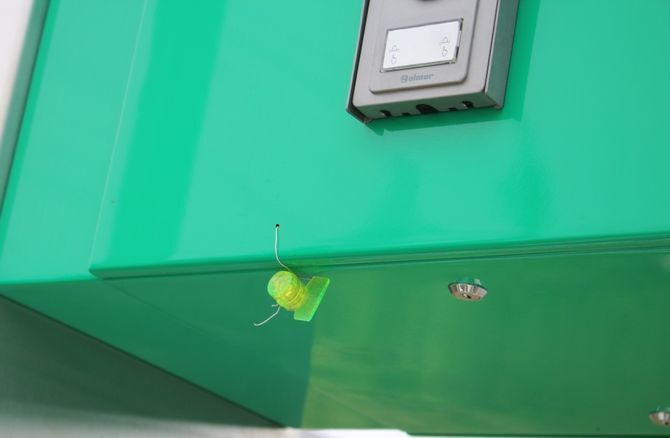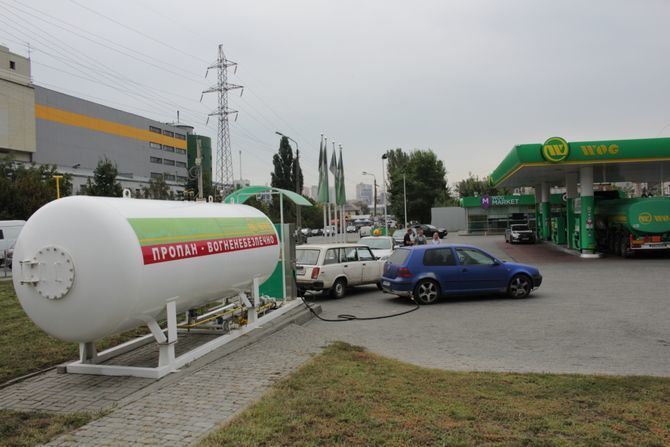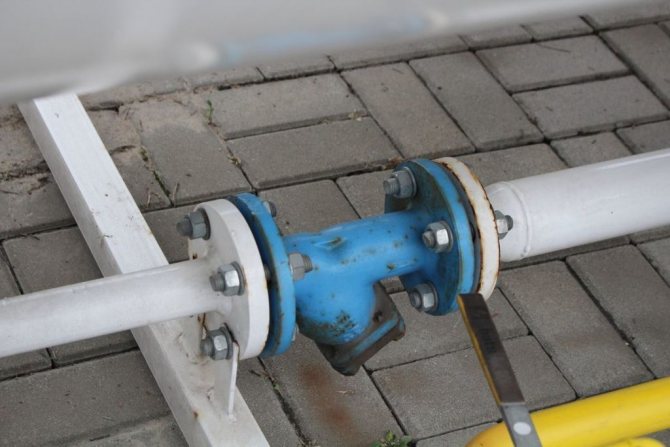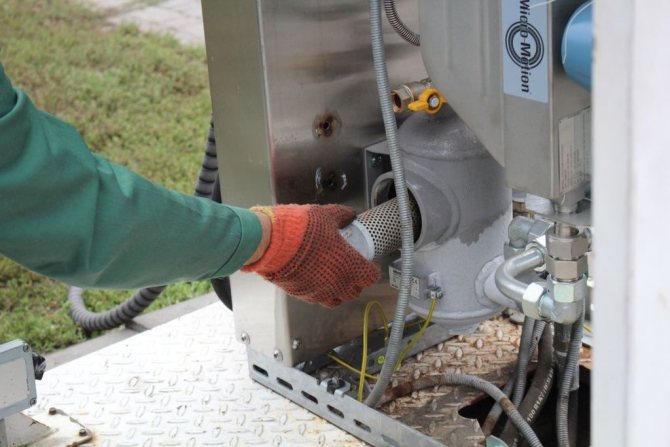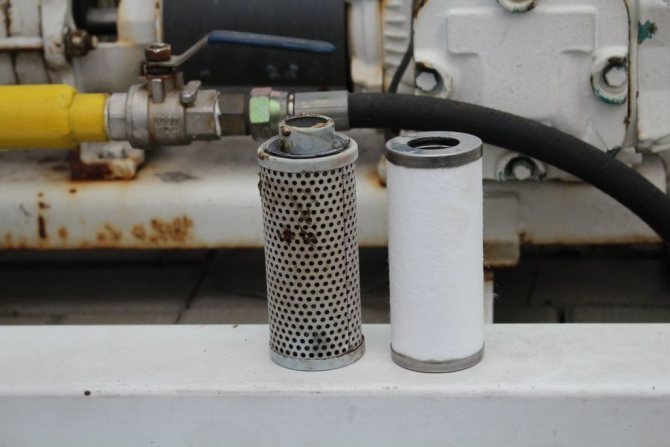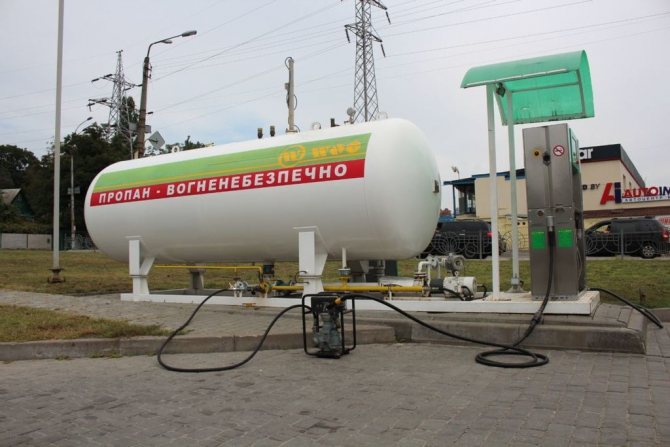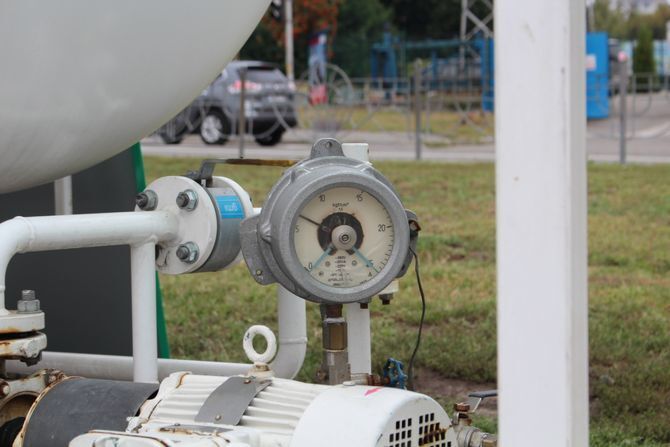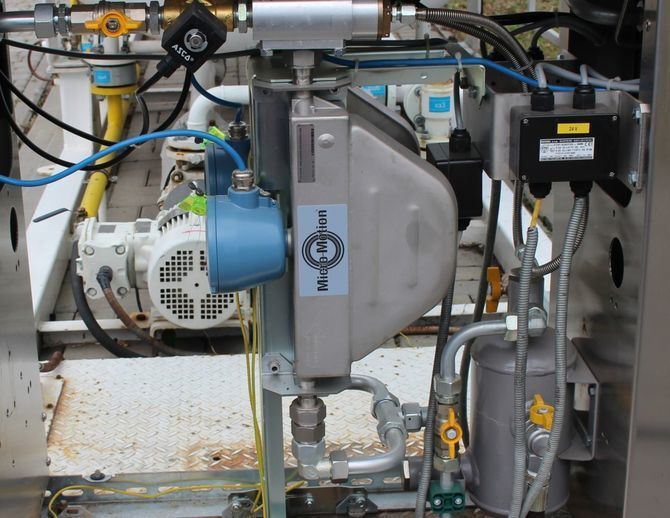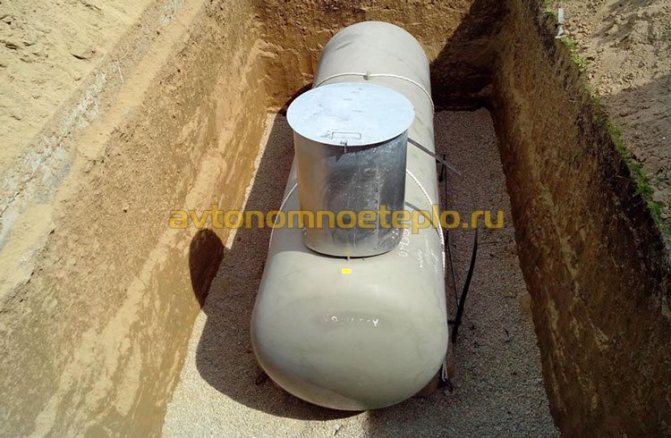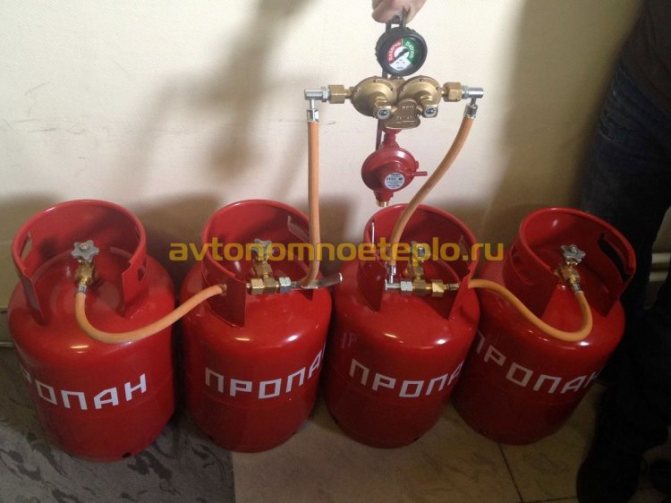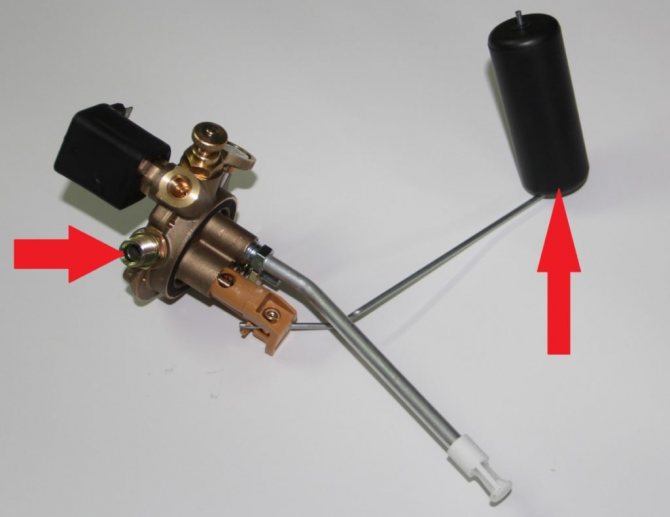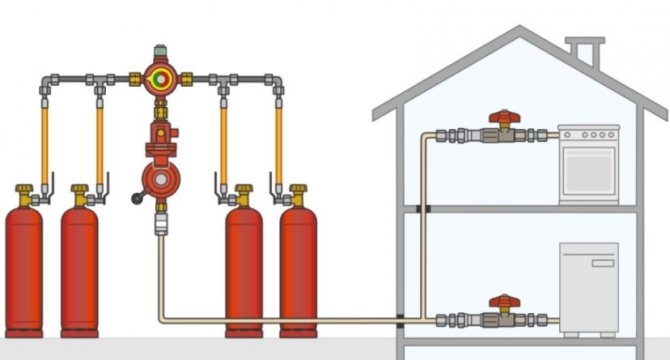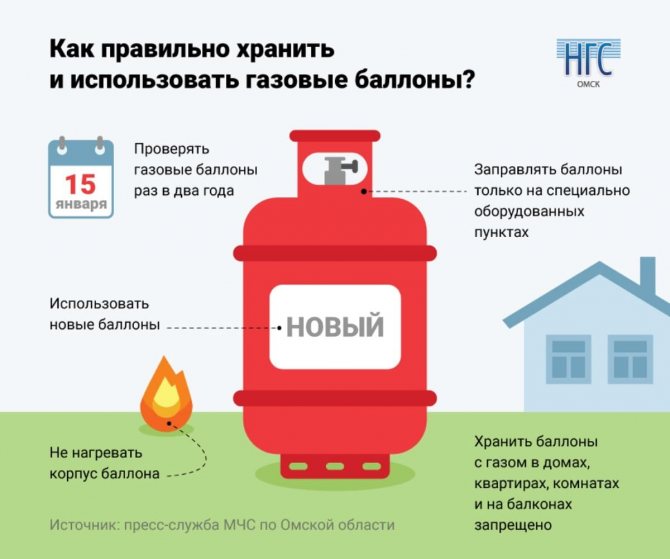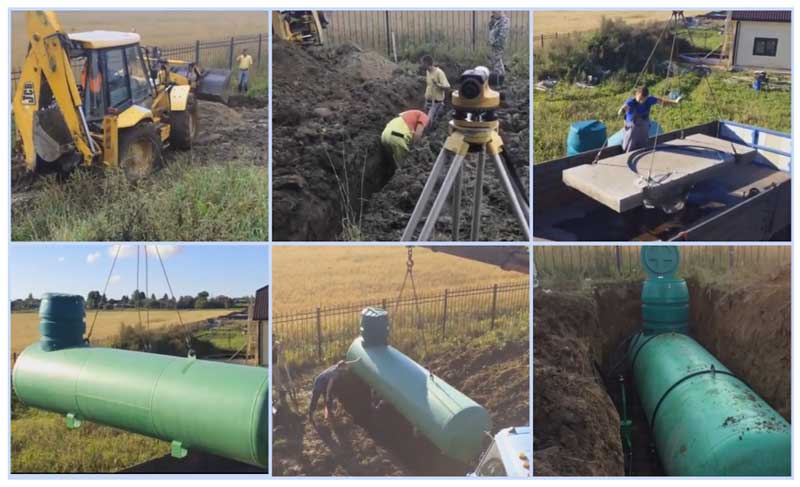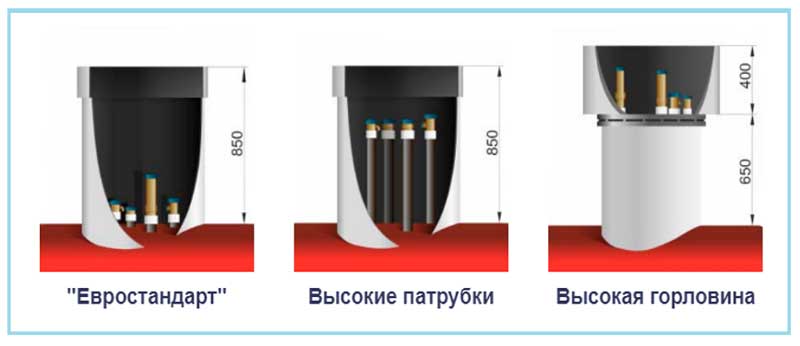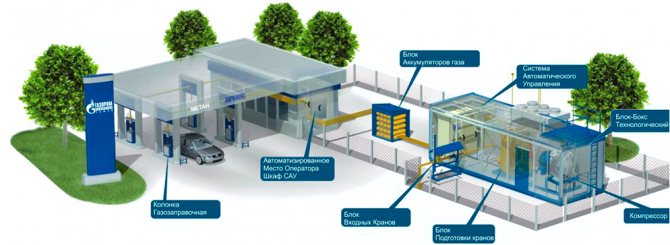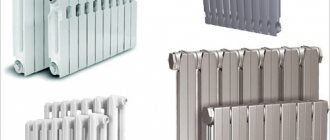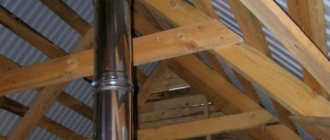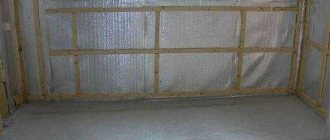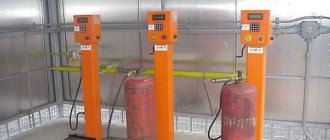The installation of a gas holder allows you to provide an autonomous gas supply to a summer cottage or a country house. Depending on the selected volume of the tank, it can supply gas to one or more houses.
It is advisable to use autonomous gas supply in places where there are no central gas pipeline networks or with insufficient gas pressure in the network.
Features of heating from gas cylinders
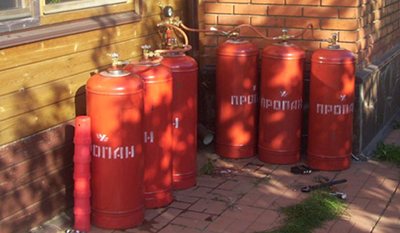
Used as a heat source butane or propane. After the gas is liquefied, it is distilled into cylinders. Then they are connected to the heating system through reducer - pressure reducing device.
In the process of passing through it, the gas again assumes its natural state. Then it is burned in a boiler, giving off a large amount of heat.
Reasons for choosing
- Low cost;
- low fuel consumption gives a large amount of heat;
- connection of such a heating system is permissible at any time and after the operation of other types of boilers;
- the use of this type of fuel acceptable in any area and building.
The principle of operation of a gas filling installation
Since the gas pressure in the gas pipeline is about 0.05 bar, it must be compressed to 200 bar before refueling. This problem is solved by the installation for filling cylinders. It can include from 3 to 5 circuits, while the principle of operation will be unchanged:
- The gas passes the filter installed at the inlet of the system and enters the cylinder of the circuit.
- The compressor builds up pressure and the compressed gas is fed to the cooling radiator.
- Through the pipeline, the gas is fed to the next circuit, where it is compressed even more.
All processes are repeated in each circuit. Before filling into a high pressure cylinder, the gas is passed through a molecular filter.
The refueling process lasts from 1.5 to 2 hours. If you use reserve cylinders, into which gas will be injected in advance, then the time can be reduced to 10-15 minutes.
When using homemade gas filling equipment, you need to be extremely careful. Gas leaks can cause various accidents.
Despite the significant increase in energy prices, gas is still the most common type of fuel. It is used for various purposes, including refueling cars. The installation of LPG equipment on vehicles allows you to reduce the cost of purchasing fuel.
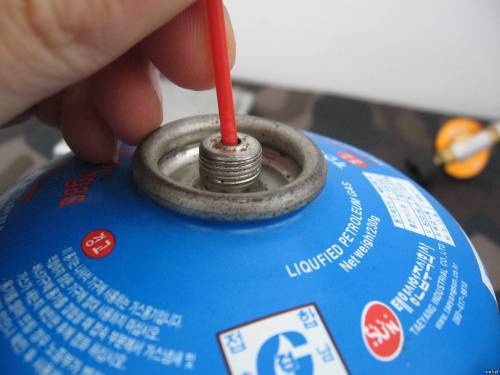

You can purchase suitable cylinders and other equipment on the website https://safegas.com.ua/ru/gazovye-ballony/.
Gas or electricity
This question is faced by everyone who considers various analogs sources of heating. To make a decision, it is important to compare them in terms of key indicators.
Gas
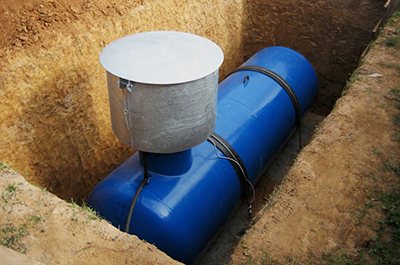

By cost 1.5–2 times cheaper than electricity. The financial side of the issue will be especially noticeable if the building is of a large area.
Autonomous heating works by means of tank-gasholderlocated underground. It can hold thousands of liters of gas. The gas tank is refueled by specialists twice a year.
The underground reservoir does not interfere with the full-fledged exploitation of the territory and does not emit an attention-grabbing smell.
Electricity
The costs are high since this energy source is considered one of the most expensive.
Sometimes the power consumed by the heating system is overestimated for the suburban electrical network, there is not enough energy to heat the whole house.
In bad weather, it often happens power surgeswhat leads to a failure in the heating system.
It follows from this that liquefied gas is a more profitable, economical and reliable option.
Autonomous gas heating systems
The use of natural gas is relatively inexpensive and safe compared to other sources of thermal energy. Modern gas equipment is able to automatically ensure optimal consumption of blue fuel and maintain comfortable conditions in the building.
The reasons for using autonomous gas supply systems may be the following circumstances:
- absence of the main gas pipeline in the accessible vicinity;
- the high cost of designing and supplying gas from it to the house;
- mistakes in the construction of a private house, in which the connection of the main gas is impossible for security reasons. The requirements for the design and operation of autonomous systems are much milder.
For autonomous gas supply, the project is developed individually for a specific building. In this case, the developer can be offered a choice of a fuel supply source: a gas holder or household gas cylinders.
Storage of liquefied fuels
Gas is contained in gasholders or special containers with spherical or cylindrical surface or underground installation type.
Such reservoirs necessarily welded.
LPG storage cylinders are manufactured sheet steel... They consist of a neck, two bottoms, a shut-off valve, a plug, a cap, a shoe, and a shell.
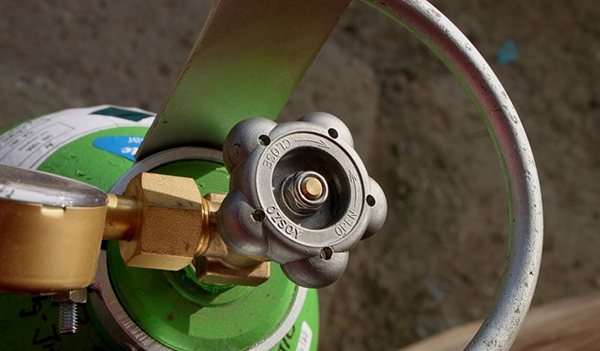

Photo 1. Gas cylinder for storage of liquefied fuel with a neck, shut-off valve, plug.
Each cylinder is marked with its type, weight and capacity, permissible pressure, stamp of OTK of the company and Gosgortekhnadzor, test pressure obtained during the hydraulic test, the date of the completed and subsequent surveys, the name of the manufacturer.
The balloon has red coloring and white signature "Propane - butane".
Reference! Before shipment, cylinders are stored in specialized one-story warehouses in the form of premises or open areas under a canopy.
Gas tank filling
The gas tank is filled through a filling valve using a special vehicle - a gas carrier machine (the tank capacity can reach 55 m³), the process of filling the tank with gas is monitored by a level gauge, which indicates the degree of filling the tank in percent.
The reservoir is filled to the level of 85% of the total volume, the remaining 15% of the reservoir is designed to accommodate the gaseous phase, which is formed as a result of liquid evaporation.


Fig. 21 Filling the gas tank with liquefied gas
Choosing the option of autonomous gas supply to a country house, many opt for underground tanks for storing liquefied gas - gasholders. In doing so, they will have to face not only the very high cost of the tank, but also the further costs of regular maintenance and technical inspections.
Advantages and disadvantages of balloon heating
Pros:

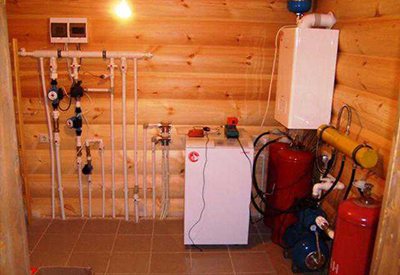
constant pressure level in pipes;- minimum fuel consumption;
- autonomy work;
- ease of use and management;
- clean natural fuel;
- the possibility of heating water for private needs.
Minuses:
- freezing of condensate at low temperatures;
- placement of cylinders is strictly provided in ventilated areas;
- in the event of a leak, the gas falls into the basement or subfloorleading to serious consequences.
A device with a boiler for heating with your own hands
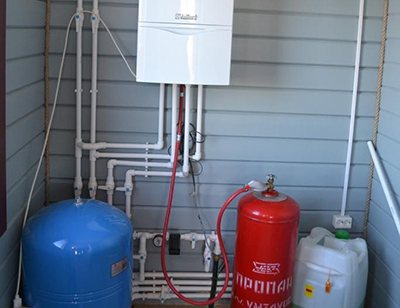

To form a heating system with your own hands of this type you will need:
- Gas boiler with liquefied gas burner. Models with low pressure and highest efficiency are suitable.
- Gas cylinders with a volume of 50 liters.
- Shut-off valves.
- Reducers.
- Ramp (used to connect several tanks).
- Gas pipeline, formed from hoses and pipes and designed to connect elements to the heating system.
Boilers are floor and wall, single and double-circuit. The latter allow not only to increase the temperature in the room, but also to heat the water.
The cylinders are connected to the system by means of a reducer with a capacity 2 cubic meters m / hour. The reducer can be one or separate for each tank.
Connecting several cylinders to a gas boiler increases the period of their necessary refueling. For such a connection is used ramp - a device that divides tanks into main and reserve. First, gas is taken from the first group, and as it ends, from the second. The moment of transition is sounded by a signal.
To fix a gas boiler with a gas pipeline, use flexible eyeliner, and for the reducer - a durite hose. The wall thickness of a gas pipe made of metal is not less than 0.2 cm... In the wall, such pipes are brought into a case and foamed.
The boiler fuel consumption is about 9 kg of gas per day. A large amount of resource will go away at the very beginning to warm up the heating system, and later - will decrease by 4 times.
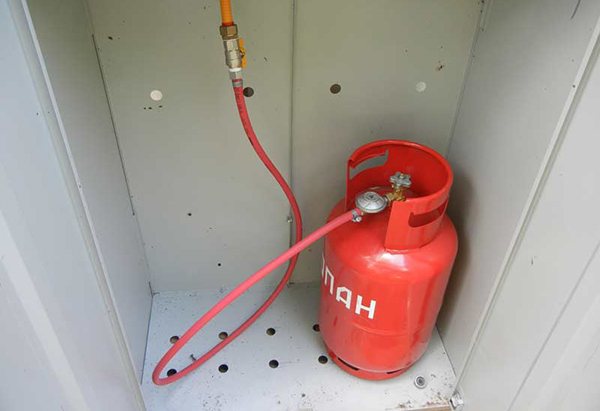

Photo 2. A red gas cylinder and a flexible hose that is used to connect to the boiler.
Refueling cylinders produced weekly specialists. Before this process, condensation is removed from the tanks. You can independently take the tanks out into the open, ground and remove the reducer. 2 hours laterwhen the remaining gas has disappeared, and the water has dropped into the ground, the cylinders can be taken to the refueling station.
Important! Not allowed for simultaneous refueling more than three cylinders.
Connection diagram
As mentioned above, to transfer gas to the boiler, each cylinder is connected to the gas heating system using a reducer. In this case, both a separate reducer can be used for each cylinder, or a common one for several pieces. A separate gearbox is safer but also more costly.
Connection to a heating boiler can be done with several cylinders at once, this will increase the time for refueling them. In this case, a ramp is used, i.e. a special manifold that distributes the capacity of the cylinders to the main and the spare. The gaseous substance is first released from the main tank, after which the collector switches the boiler to the reserve group. At the moment of switching, a sound signal is heard.
As when connecting any other heating system, gas supply of heat energy requires the installation of convectors for individual rooms of the building. As a rule, gas convectors are compact and resistant to low temperatures. Radiators can be equipped with automatic temperature controllers, air vents, shut-off valves, flow sensors. The heating system can be designed for both natural and forced circulation of the coolant. With natural circulation, there is no need for sensors and air vents, you can save on this.
Gas cylinder connection diagram
The piping layout connecting the gas boiler and radiators is two-pipe and one-pipe. The first version of the supply implies a coolant supply and return system on each of the radiators, when it enters the heating device through one of the pipes, and returns to the boiler in a cooled form through the other. This allows you to achieve a uniform degree of heating of the coolant in all radiators of the building. When connecting a two-pipe system, the radiators can be arranged in parallel-series or separately. With one-pipe wiring, it becomes possible to regulate the temperature of each convector separately. At the same time, it implies tangible financial costs, since it becomes necessary to install a significant number of pipes for piping to radiators.A similar scheme consists in the sequential transfer of the heated coolant from one radiator to another. The disadvantage is that the coolant gradually cools down, and the last battery will always be less hot than the first.
Features of use
In different rooms there are own rules operation of gas cylinders.
In the apartment
The installation of a gas boiler is only permitted if the following conditions are met:
- obtaining a number of approvals on this process from specialized services;
- purchase of the necessary equipment;
- preparation of the apartment;
- heating system change - its disconnection from centralized communications;
- chimney and ventilation installation.
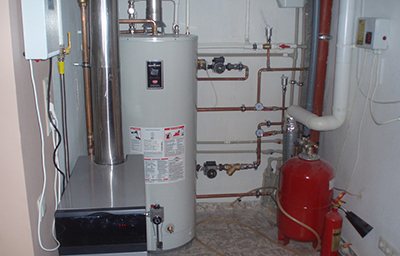

In this case, the room itself must meet the requirements:
- area of at least 4 sq. m;
- the presence of good natural lighting, vents;
- ceiling height not less than 2.5 m;
- entrance door with a width of at least 0.8 m;
- cold water pipeline;
- smooth walls.
Gas cylinders are allowed to be placed in the apartment, but no more than one... In this case, the building itself should not exceed 2 floors. Such containers fix 50 cm from the gas stove and 100 cm from heaters... The limiting temperature of the room in which the installation process is carried out - not higher than 45 ° C.
Attention! Independently carry out the process of installing a gas heating system Absolutely forbidden, this is done by employees of special services.
In a private house
Along with the installation of a gas heating system, in some rooms, fixation of convectors - devices that allow you to warm up the room in a few minutes.
Used as a storage for cylinders gas tank... Its volume is determined in the course of calculations LPG consumption level... In this case, it is important to take into account both the fireplace and the hot water boiler and the gas stove. The higher this indicator, the larger the volume of the selected container.
In the garage
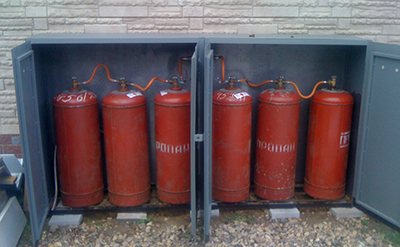

This structure is considered fire hazardous, therefore, the gas boiler must be taken out to a separate room with an area of at least 4 sq. m. with walls made of non-combustible materials.
Gas cylinders have in a special metal cabinet, at a safe distance from flammable objects, above the floor mark. This will quickly detect and prevent gas leaks.
Features of liquefied gas
Liquefied gas is the same natural gas, but artificially liquefied. It is compressed and cooled to a temperature of minus 160 ° C. This is done in order to make it easier to transport and store. When compressed, the volume decreases 600 times. The process takes place in special installations (turbine-vortex, turbo-expander, throttle) in stages - at each stage the gas is compressed no more than 12 times, then it is cooled and transferred to the next stage. It is stored in cryo-tanks.
The advantages of liquefied gas are as follows:
- incombustible;
- non-explosive;
- evaporates quickly;
- not toxic;
- can be transported in cylinders of various capacities;
- does not react with metals.
Liquefied gas is filled into cylinders of different capacities, the purpose of which is diverse. They are used for transportation, storage and for use at work. This is the classic formulation of the purpose of cylinders. So, summing up everything that has been said above, the cylinders contain liquefied natural gas, which is widely used in housing and communal services, in vehicles, in industry and agriculture.
Gas can be piped, and it can be in cylinders or gas tanks. The first one is cheaper, but expensive to conduct. The second one is much easier to buy, but it costs a higher price. What are the differences between these two types of fuel and how is the price formed? We are publishing clarifications of the Regional Energy Commission of the Omsk Region on this issue.
What is the difference between liquefied and natural gas?
Natural gas is a mineral, it is a mixture of different gases of natural origin. Most of it is methane. Natural gas is odorless, so odorants - foul-smelling substances - must be injected into it in order to quickly detect a leak. The specific heat of combustion of such a mixture is from 7,600 to 8,500 kcal, the exact figure depends on the composition of the natural gas.
Natural gas is extracted from the bowels of the earth, pumped into special gas storages and delivered to consumers through gas pipes.
Liquefied petroleum gas is a product of the processing of associated petroleum gas and refinery gases, which are hydrocarbons.
In the production of liquefied gas, a liquefied propane-butane mixture is used. In this state, the density of the gas increases hundreds of times, which increases the efficiency and convenience of transporting, storing and consuming the mixture. Liquefied gas is filled into special cylinders or pumped into gas storage tanks. The specific heat capacity of such a mixture is slightly higher and averages 9,500 kcal.
In accordance with the legislation, LPG is allocated for domestic consumption and industrial purposes and LPG for road transport. Odorants are also added to LPG.
